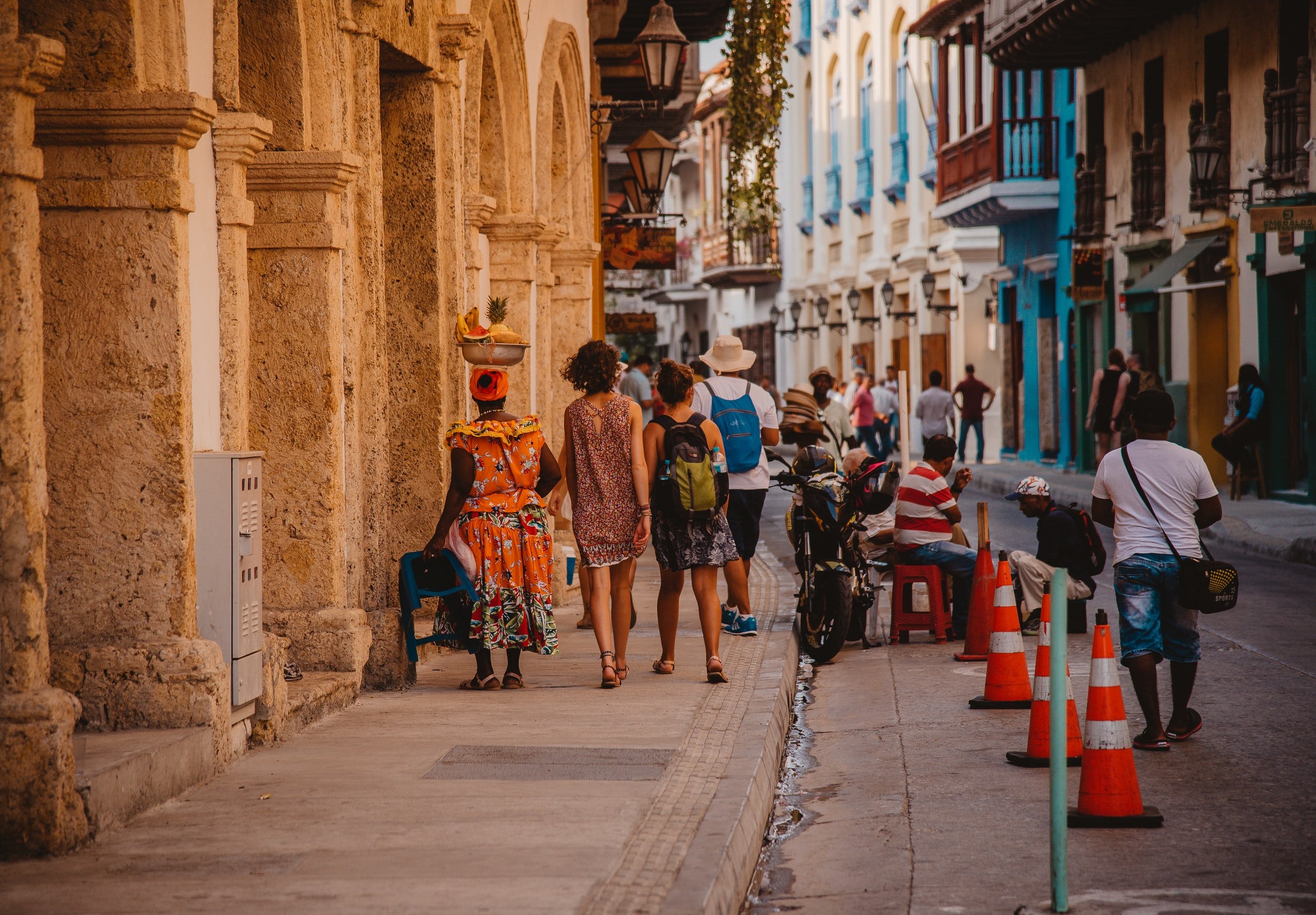Top 10 Mexico Travel Tips for Students
/Mexico is one of the most affordable destinations for international students
With vibrant cities, rich indigenous cultures, and sprawling coastlines, Mexico ticks every box for young people seeking adventure.
It also has some of the best universities in Latin America, making Mexico a popular destination for students who want to kick-start their careers with an excellent international education.
If you want to visit Mexico, we’ve got some handy advice that will help you get the best out of your experience. From money-saving tips to safety tips, here are 10 of the most important things to know before traveling to Mexico.
Day of the Dead in Mexico is an amazing thing to experience. You’ll want to speak basic spanish to get the most out of it.
Learn basic Spanish
Before embarking on the trip, we recommend that you learn some basic Spanish. English is spoken by some locals in the major cities and tourist areas, but if you can speak Spanish, you’ll be able to connect with them on a more meaningful level.
Study basic phrases including greetings, requests, and directions. This can be done by using a beginner’s Spanish dictionary or a free language-learning app such as Duolingo.
When venturing into rural regions, be aware that you may also encounter indigenous languages such as Nahuatl.
fall in love San Miguel de Allende, a magical city in central Mexico filled with art and culture.
2.Prepare for different weather
Mexico is a huge country, spanning several different climate zones. If you’re anticipating year-round sun across the country, think again. Packing for different weather is one of the most essential Mexico travel tips.
To the southeast, you can expect warm weather at all times, although hurricane season in the winter months can lead to a tropical washout. Many travelers visiting Mexico aim for the dry season between December and April to sidestep this.
In the highlands—which includes Mexico City and other popular destinations in Central Mexico like San Miguel de Allende—temperatures can drop to surprisingly chilly levels. If you’re visiting these areas, remember to bring a jacket.
Even if Local people are drinking, as a traveler you might not be used to the tap water in mexico
3. Avoid tap water
One of our most important Mexico safety tips is to never drink water directly from the tap. Some Cancun tourist resorts have clean tap water, but 99% of the time you will have to source your fluids from elsewhere.
Because of this, you’ll find plenty of enterprising locals offering bottled water at a bumped-up price. Rather than buying bottled water every few hours, do what’s best for your wallet and the environment by purchasing a reusable water bottle.
You’ll also need a water filter or iodine tablets to purify tap water. Conveniently, many of the latest reusable water bottles on the market come with an inbuilt filtration system.
Mexico has thousands of miles of beaches, try to find some out of the way for the best experience
4. Escape tourist areas
Do yourself a favor and go beyond the common tourist destinations along Riviera Maya like Playa del Carmen. From charming colonial towns to fascinating archaeological sites, Mexico has so much to offer besides its white-sand beaches on the Caribbean coast.
When people visit Mexico, they often skip Mexico City and miss out on a host of world-class cultural sites including the National Museum of Anthropology, Frida Kahlo Museum, and the Leon Trotsky Museum.
Oaxaca is another much-overlooked region. The state boasts fascinating ancient ruins at Monte Albán, stunning colonial architecture, traditional culinary delights in the form of mole, as well as its own share of picture-perfect beaches in Puerto Escondido and Mazunte.
keeping Mexican Peso in your wallet is important to watch and trade for a number of reasons
5. Carry some pesos
One of our most effective money-saving tips is to always carry a wad of Mexican pesos. Credit and debit cards are widely accepted (and even dollars bills in some areas), but these payment methods often incur extra fees and are also prone to an inflated exchange rate from vendors.
Instead, use the local currency to save money. If your bank allows foreign currency withdrawals, make sure to withdraw money at an ATM. This will give you a much better exchange rate than an exchange bureau.
It’s also handy to have Mexican pesos available when making purchases from street vendors, which brings us to our next travel tip…
you'll never go hungry in Mexico City, as famous known of one of the best street food cities in the world
6. Eat street food
Mexico—and especially Mexico city—is renowned for its mouth-watering street food. Sampling the culinary offerings of local vendors is one of the best ways to (literally) consume Mexican culture.
Most visitors to the country will likely have sampled Mexican food before in the form of tacos, quesadillas, and even churros—but make sure to leave some room for tamales and elotes too!
Not all food stalls are made equal, however, so take stock of cleanliness as well as if the meat has been cooked. If you notice a long queue of locals lining up, chances are the food will be delicious!
Bus travel in Mexico is efficient, economical and comfortable and most buses are modern
7. Make use of local transportation
Another way to live like a local is to take advantage of Mexico’s excellent public transportation links. Students can easily hop between states aboard spacious, air-conditioned buses that represent a cheaper alternative to domestic flights or costly taxi rates.
ADO is the carrier of choice among Mexicans. Their buses are extremely modern and run regularly across a vast network of routes that connect virtually all towns across the country.
If you’re working with a particularly tight budget, consider using a ‘colectivo’ to get from A to B—these are shared minibusses or vans that offer locals a budget shuttle service. They’re most common along Riviera Maya in the Yucatán Peninsula but can be found all over Mexico.
by renting a car is a great idea if you want to go exploring a region on your own schedule, but be weary of scams
8. Be mindful of scams
Scams are rare, but it’s still important to be aware of the warning signs so that you don’t end up out of pocket. There are two groups that you should exercise particular caution with: car rental companies and tour operators.
When browsing car rentals online, you’ll likely find some extremely cheap quotes of around $5 per day—sometimes even less. However, once you show up to collect your rental car, agents will try to charge you a huge insurance fee. For this reason, always go with trusted providers.
You also need to be wary when visiting popular tourist attractions. Many of the biggest sites are populated by unofficial tour guides who will try to rip you off, claiming that a tour is compulsory. This is rarely true, and, in most cases, it’s better to explore the site on your own anyway.
best way to stay in touch with someone, get directions, and a convenient way to provide documentation as traveller
9. Extend phone coverage
One of your first priorities will be to upgrade your phone coverage so that it can be used in Mexico. WiFi is usually available in hotels, malls, and restaurants, but if you’re traveling to more remote areas, you’ll need data to keep in touch with loved ones.
Many mobile providers now offer international call and data plans. You may already be on one of these plans, but if not you can look to upgrade.
Alternatively, those traveling to Mexico can purchase a local SIM card to enable internet connectivity. They’re widely available in hardware stores across the country. Telcel is the most popular choice for tourists.
MExico is an amazing destination, you just have to come prepared
10. Secure travel insurance
Mexico is generally a safe country to visit and accidents are unlikely, but it’s still wise to arrange travel insurance for peace of mind. This is especially true during hurricane season when extreme weather can cause property damage.
Make sure to read over the travel insurance policy carefully before purchasing. Some providers may sneakily omit specific scenarios from their coverage, such as hurricane damage or medical evacuation.
World Nomads is a respected insurance provider and offers wide coverage, but we recommend that you use a comparison website like travelinsurance.com to shop around.
as part of your travelling in mexico; don’t forget to dive into where quesadillas do come from
Are you ready to visit Mexico?
By following these 10 tips for travel to Mexico, you’ll stay safe, keep to your budget, and get to see the best of this beautiful country!
Are you considering visiting Mexico or leading a student group? Learn from Travel has a deep network in Mexico and specializes in culturally immersive study abroad experiences. Contact us to arrange your fully customizable Mexico travel program now!





















































































